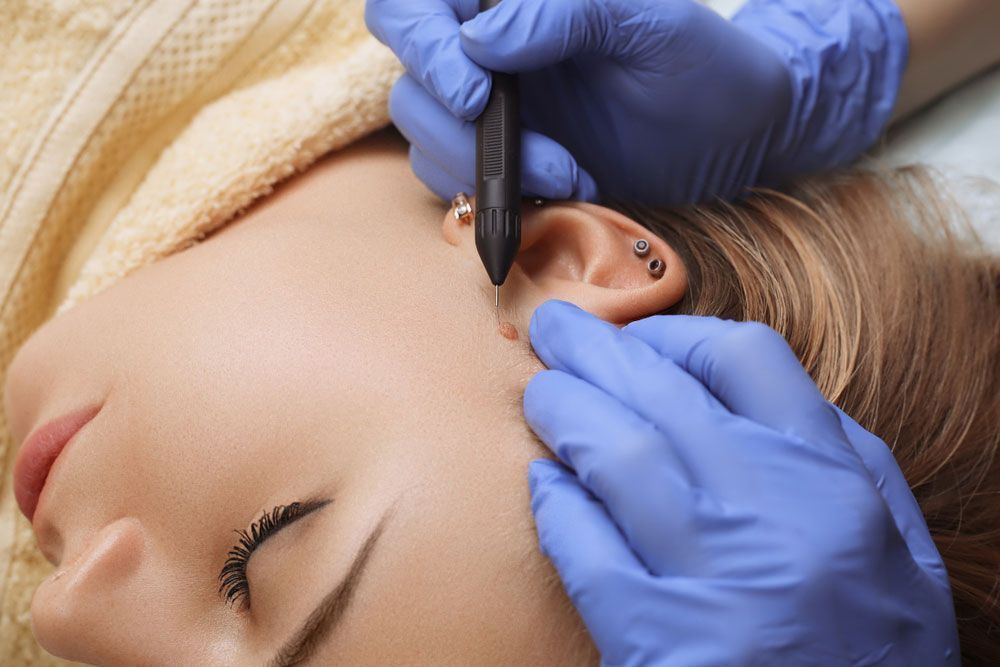
Electrocauterization
It is the general application name of treatment methods that are effective by creating thermal damage to the tissue with appropriate devices using electrical energy. In dermatology practice, it is used for the treatment of benign lesions such as moles, warts, moles, seborrheic keratosis, vascular moles, as well as for bleeding control and tissue incision in minor surgical procedures and also for needle hair removal.
The device to be used in electrosurgery applications should contain technical features that can make it suitable for the basic forms of electrosurgery applications by modifying the high frequency alternating electric current by suppressing, reducing, amplifying and changing the amperage.
A) Before Application
1- The room where the application will be made must meet the conditions required for minor surgical interventions (equipment, cleaning, etc.).
2- In addition to the standard preoperative evaluation, it should definitely be learned whether the patient has a pacemaker or not.
3- Before starting the application, the patient should read and sign the informed consent, which includes detailed information about the side effects and complications that may occur during and after the application of electrosurgery. If the patient is under the age of 18, the signature of the legal guardian must be obtained.
4- The recording and photographing of the patient should be done carefully.
5- Before the application, metal jewelry and objects on the patient should be removed.
6- Good placement of the dispersive electrode is important in preventing secondary burns.
B) Application
1- Local anesthesia is applied.
2- Flammable, flammable anesthetic substances and other chemicals should never be used.
3- The area is wiped with an antiseptic solution.
4- Electrocautery tip is applied to the surface of the lesion, the tissue is damaged (destruction) and the damaged tissue is removed with gauze or curette. This process is continued until the desired depth is reached. Hemostasis is usually achieved with the tip. Electrolysis is used for thin telangiectasias and hair removal (needle hair removal). While the patient is holding the positive electrode with his hand, the fine tip (needle) is applied into the hair follicle and the current is increased.
5- Electrocoagulation combined with curettage is also used in the treatment of superficial basal cell carcinoma and squamous cell carcinoma. Curettage and electrocauterization are repeated several times (usually 3 times) until the tumor is completely removed.
6- In practice, it should be considered that the electric current can spread along the large nerves.
8- Considering that the application time will be prolonged in widespread lesions, application can be made in a few sessions.
C) Postoperative Evaluation
1- For postoperative care, prophylactic antibiotics should be recommended in common field applications, and topical antibiotic ointments should be recommended in all cases. In superficial applications, the ointment application is continued until the healing is completed and usually openly. In deeper applications, the ointment application is continued closed (daily dressing).
Side Effects and Complications
Bleeding, hypopigmented scar formation, burn formation, ignition, fire, explosion, infection (microorganism contamination) and surgical smoke can be counted as side effects.
Comment
Electrosurgery is one of the indispensable parts of the dermatologist’s daily life. It is an easy, fast, practical and economical method to apply.
